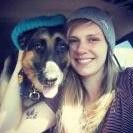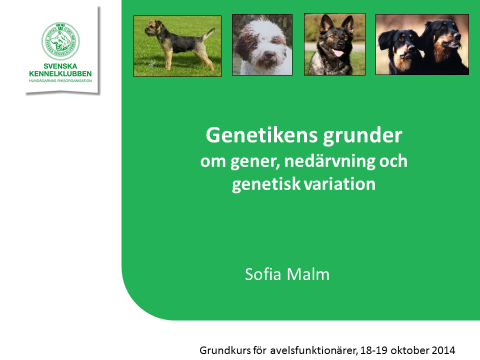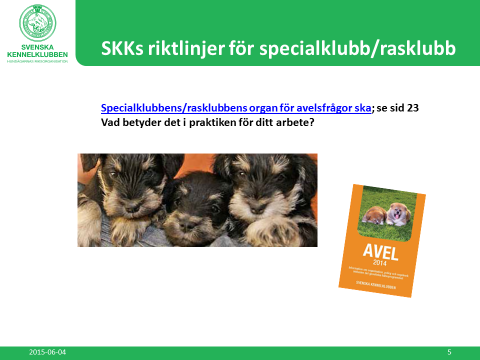Blogs
Featured Entries
-

COVID-19 - a novel experience for dogs and people
Sources of accurate and relevant COVID-19 information for your dog, your puppies and you. In the face of the great uncertainty surrounding COVID-19 and its impact on pets and pet owners, many veterinary and regulatory organizations have been providing excellent information and advice, as have kennel and breed organizations. It is important to remember that recommendations and restrictions vary depending on location and owners need to access and follow local recommendations, especially as t- 2 comments
- 1,987 views
Our community blogs
-

Finland is a pioneer in cross breeding!
See the press release: The Finnish Kennel Club accepted separate cross breeding projects for Cavalier King Charles Spaniels and French Bulldogs
Excerpts...
"The Board of the Finnish Kennel Club accepted cross breeding projects for Cavalier King Charles Spaniels and French Bulldogs in their meeting on 15 June. In the same meeting, a decision was made to start a new cross breed register where the crossbred dogs will be registered in."
The FKC's Scientific Commission and the breed clubs have carefully prepared the crossbreeding programs.
The press release includes selected breeds for the outcrossings for each breed - the choices based upon the breed's behaviour and character, and that the dogs are not known to have same or similar health issues.
Registration and exhibition information is available - "A new cross breed register enables crossbred dogs to participate national shows subject to the Finnish Kennel Club".
- Read more...
-
- 0 comments
-

- 27
entries - 1
comment - 27448
views
Recent Entries
Comment: Grassroots efforts by people who know and care for breeds can lead to better understanding of issues affecting breeds of dogs - this study taps into internationally based "Citizen Science" project collections along with Kennel Club resources. It is remarkable that in today's sometimes divisive society, where different views of how to best manage dog health and welfare exist, that Citizen Science project data collected can be analyzed by scientific researchers to offer potential ideas for moving forward to improve dog's lives.
See: Wade, C.M., Nuttall, R. & Liu, S. Comprehensive analysis of geographic and breed-purpose influences on genetic diversity and inherited disease risk in the Doberman dog breed. Canine Med Genet 10, 7 (2023). https://doi.org/10.1186/s40575-023-00130-3
Note: 3,226 dogs are included in this study.Background
"Publicly available phenotype data and genotyping array data from two citizen science projects: “Doberman Health Surveys” and “The Doberman Diversity Project” were analyzed to explore relative homozygosity, diversity, and disorder risk according to geographical locale and breeding purpose in the Doberman."
Excerpt...
"By genotyping, the world Doberman population exists as four major cohorts (European exhibition-bred, Americas exhibition-bred, European work, Americas pet/informal)."
Check out this study to...
- see life expectancy data differentiated by cohort (1,738 reported ages at death)
- disease incidence including dilated cardiomyopathy, congestive heart failure, osteosarcoma, cervical spondylomyelopathy (wobblers), lymphoma, gastric dilation volvulus (bloat), spondylosis and haemangiosarcoma.
Important to note... related to diversity
"...the (Dobermann) breed has had a purpose divided between the original breed working function and as a family companion. As is common in working dog breeds, division of purpose has resulted in differences in breeding objectives between breeders producing animals fit for each purpose."
The figures and tables in this paper are revealing.
Fig. 1.
Survival curves for locale-purpose cohorts phenotyped
The leading causes of death according to dog age in years at the time of death across all locales are described in Fig. 2.
Availability of data and materials for this study
Electronic information relating to Doberman lifespan and cause of death are available from: https://dobehealth.org/results/index.php
Access to genotyping data is provided on request from the Doberman Diversity Project: https://dobermandiversityproject.org/
RELATED CONTENT - DogWellNet
Fine tuning breeding choices to address breed predispositions to develop disease based on evidence is the goal of responsible breeders.
Breed and Public Education are key to improving lives of dogs.
See the POSTER from the Doberman Diversity Project... which was displayed at the 4th International Dog Health Workshop.

The poster provides an overview of results of genetic testing done by Embark through its Doberman Diversity Project panel test.
Genetic disease predisposition and diversity information is available.
Also see our article, Get a GRIHP! on the Dobermann
Dobermann - DWN's Pedigree Dogs DB page
- Read more...
-
- 0 comments
- 27
-

 This week is the anniversary of the First International Conference on Human Behaviour Change for Animal Welfare that took place in the UK 2016. All the talks are on their YouTube channel.
This week is the anniversary of the First International Conference on Human Behaviour Change for Animal Welfare that took place in the UK 2016. All the talks are on their YouTube channel.
See our article following the Conference.
I was honoured to give a presentation - and in that process to learn about the knowledge, methodology, and tools available from human behaviour change theory and practice to help us.
My talk is posted on the HBC's YouTube channel under the title: How Beliefs and Attitudes about Dog Health and Welfare Limit Behaviour Change.
In fact, the entire title was:
Don't Know or Don't Care? How Beliefs and Attitudes about Dog Health and Welfare Limit Behaviour Change.
See the Video Presentation and article/PDF presentation HERE
and the video (below) is also available on YouTube...
I am in general not a fan of watching videos of myself. But this is a good talk - helped by the fact it was prescribed to be only 15 minutes long!
However, reviewing this talk I was struck by something that was equally positive and extremely disappointing.
The material in this talk is as relevant today as it was 4 years ago.
Perhaps even more so. We are coming out with more material this week on challenges around brachycephalic dogs that will highlight the pros and cons of legislative actions, the diversity in opinions, even from those within the world of pedigree dogs, from total denial to intense concern. There will be more talk about complexity, and the role of various stakeholders , e.g. veterinarians -- are they really doing all they can?
I know that 4 years is not very long in terms of change for people or dogs. But we have also recently completed a chapter for an upcoming textbook and that work highlighted that problems in flat-faced dogs have been discussed at least since the late 1960's. So that is not 4 years, it is over 50 years. There has been a phenomenal increase in evidence for the prevalence and high risk of health issues, many of which incur welfare concerns, in the worst affected breeds. This has intensified in the last 10 years as the popularity of these breeds has increased, and then skyrocketed (see our Get a GRIHP! article on French Bulldogs). There have been many creative attempts to educate the public, and research to understand attachment to these dogs.
Given all that.. I am sadly concerned that:
- There may still be some 'Don't Know' people out there... and we can continue trying to reach them.
- But, unfortunately there are some people, some very loud on social media, some in positions of influence in the dog world, who are displaying behaviour that comes across as 'Don't Care'.
- At least it seems that they don't care ENOUGH about the dogs to be willing to undertake the human behaviour change needed to sustain a healthy future for the breeds they 'love'.
We have to find a way to help people understand that admitting there are problems is the first step towards resolving them.
- Read more...
-
- 0 comments
-

 Latest Entry
Latest Entry
What does IPFD offer to its kennel club Partners?
IPFD - non-political and evidence-based
The International Partnership for Dogs (IPFD) is a not-for-profit organisation leading a global, multi-stakeholder effort to improve the health, well-being, and welfare of dogs.
We are an evidence-based, non-political, independent organisation that gathers, presents, and promotes issues on dog health and welfare.
Sharing and exchange
We are a large, diverse community whose members benefit from shared discussions and the exchange of information and experience.
For example, there has been a wave of legislative action in many European countries regarding pedigree dog breeding. Together, we are helping ensure that decision makers are working with the best available information and support our mutual commitment to responsible dog breeding.
And we believe that responsible dog breeding means taking full responsibility for canine health and welfare – ensuring breed-specific and more broad issues are all recognized and effectively addressed. IPFD is uniquely positioned to facilitate this process. IPFD has been steadily compiling breed-specific management strategies and breed expert recommendations for owners and breeders as well as, resources to support veterinary-client communication.
Practical tools
Members of our community have developed various tools and practices to promote dog health. By sharing these practices, they can benefit from and support each other's work. For example:
- Svenska Kennelklubben (Swedish Kennel Club): Dog health and breeding – information about the breed specific instructions regarding exaggerations, behavior and personality assessment in dogs as well as links - for example to Code of Ethics. There’s also a pamphlet ‘Breeding dogs in Sweden’.
- The Kennel Club, UK: Breeding resources and health schemes include for example health screening schemes for hip and elbow dysplasia, syringomyelia, eye disease, BOAS, heart disease and intervertebral disc disease.
- Société Centrale Canine (French Kennel Club, SCC): Genodog – a distinct website, gathering all information about genetic diseases in dogs, with diagnosis, treatment, and identification of the predisposed breeds (in French). English information on SCC activities exists here.
- Suomen Kennelliitto (Finnish Kennel Club): a general breeding strategy that can be applied to all breeds. Finns have also compiled instructions for planning and monitoring crossbreeding projects.
- Norsk Kennelklub (Norwegian Kennel Club): Breeding Strategies, Ethical Rules, Breeding Regulations
Our Partner kennel clubs have also breeding databases with various population statistics. For example Avelsdata (Sweden), Koiranet (Finland), LOF Select (France).
On DogWellNet, we have:
- Established an open-access, sustainable online resource for genetic testing (Harmonization of Genetic Testing for Dogs), where you can search for relevant tests by breed, condition and genetic test provider (GTP),
- Collected information on breed-specific health strategies in different countries (some highlights are available in our article, National Programs for Breed Health, and in several articles under the Additional Breed Resources category - we have recently added an open database (the Health Strategy Database for Dogs), and
- Compiled breed-specific health articles that describe the big picture of health in the breed.
These resources, and others on DogWellNet.com, can be used by kennel and breed clubs to develop national health strategies.
We also offer advice to our members on health screening, genetic testing, and breeding strategies. And we frequently profile the good work that our Partner kennel clubs are doing.
Join us!
We stand ready to lead, support, and promote healthy pedigree dogs together with any kennel club that is committed to doing the work needed. By joining us, you will demonstrate your commitment to maintaining and improving the health of dogs. You will show that you are a forward-thinking organisation working for the benefit of dogs.
We welcome you to join us!
Contact Us
Marc Ralsky CEO - marc.ralsky@ipfdogs.com
Aimée Llewellyn-Zaidi, HGTD Project Director - aimee.llewellyn-zaidi@ipfdogs.com
General inquiries - info@ipfdogs.comIPFD Contributing Partners:

- Read more...
-
- 0 comments
-

- 3
entries - 0
comments - 9214
views
Recent Entries
Coefficient of Inbreeding vs. Genetic Diversity Level in Greyhounds

Coefficient of Inbreeding vs. Genetic Diversity Level in Greyhounds-update_2019.pdf
IPFD Board member and veterinarian Barbara Thiel shared an English translation of this article which appeared in The Greyhound Show blog. The article includes a discussion of data available from the MyDogDNA on genetic diversity measurements in greyhounds - greyhound breeders are encouraged to read this document to gain perspective.
Ideas presented on making assessments of genetic diversity are potentially useful considerations applicable to other breeds, i.e. ancestor loss and COI.
Related material:
See Brenda's blog: Genetic Diversity: The Big Picture and Challenging Issues
- Read more...
-
- 0 comments
- 3
-

- 6
entries - 3
comments - 5779
views
Recent Entries
Working together: dog breeders, researchers, veterinarians, and kennel clubs have developed a truly international screening scheme for respiratory function.
UPDATE: 5/25/2023
The OFA - just published info on participating in the Respiratory Function Grading Scheme - see their Overview at https://ofa.org/diseases/rfgs/ - includes an event planning guide and instructions/rfgs forms.
On 20 January 2023, I had the privilege of attending the Rose City Classic Dog Show, which included the North American launch of the Respiratory Function Grading Scheme (RFGS), colloquially known as the Cambridge BOAS scheme. The Orthopedic Foundation for Animals (OFA) is licensed by The Kennel Club in the UK, to administer the scheme and train new assessors. The scheme is currently offered formally to the British Bulldog, Pug, and French Bulldog, but other brachycephalic breeds are able to participate. Participation is quick, easy, and painless for the dog.
This scheme is many years in the making, and is an excellent example of collaboration between dog breeders, researchers, and kennel clubs working together to make steps towards addressing a complex and challenging health condition. Owners who participate in the scheme benefit from immediate information on key areas associated with risk of brachycephalic obstructive airway syndrome (BOAS) for their dog, as well as information for selecting breeding stock. They also directly contribute to a growing body of international data that supports genetic and veterinary researchers work to improve risk assessments.
Basic Steps of the Scheme:
1. Owners fill in a short survey
2. A brief physical examination of the dog, while calm, to establish a baseline
3. Dog has a brisk 3-minute walk (not running)
4. A post-walk assessment to compare to the baseline
5. Dogs are given a grade 0-3, with 0 being lowest risk and 3 being highest. Data is recorded, and in many cases available to view online.Above: The dog is assessed in a quiet and relaxing space, with their owner. The specially trained assessors, all veterinarians, look at the nares (nostrils) and listen to the dog breathing.

Above: The screening session is recorded, along with data on the breathing. Standardized scoring cards are used to assess the nares.
Not pictured: Dogs undergo a timed 3-minute walk around a standard show ring. Dogs are not encouraged to run, but simply to walk at a reasonable, quick pace.
During my visit, I watched several dogs undergo the assessment. Speaking to the owners, the most common reasons they wanted to participate was to demonstrate that using the scheme was the right thing to do for the breed, to help grow awareness and use of the scheme, and as part of pre-breeding assessments. The assessors on the day had a steady stream of French Bulldogs, English Bulldogs, Pugs, and some Boston Terriers. While at the moment the screening scheme is designed for French Bulldogs, English Bulldogs, and Pugs, other brachycephalic breeds can utilize the scheme, gaining valuable information and contributing to research. I witnessed many owners who had dogs scoring Grades 0-1 (the lowest risks), both in young and older dogs.
It will take time to track how use of this scheme reduces the risk of BOAS in future generations of dogs, but at the very least the consistency in the data collection and the ability to identify higher-lower risk dogs to breeders is valuable and an important resource to brachycephalic breeds.
Accessing the RFGS screening scheme
The scheme is available in the UK, and USA. The Federation Cynologique Internationale (FCI) also supports this screening scheme. Currently there are 11 countries currently offering the scheme: Australia, Denmark, Mexico, Netherlands, New Zealand, Portugal, Sweden, Switzerland. 8 more countries are in process for 2023.
More information on the scheme:
UK: The Kennel Club and University of Cambridge's Respiratory Function Grading Scheme
FCI Countries: Brachycephalic breeds' health: agreement between the Kennel Club (UK) and the FCI
North America:
The Kennel Club grading scheme details:
FrenchbulldogandbulldoggradingschemeKC.pdf
The views and opinions expressed by the authors and those providing information or comments on this website are theirs alone, and do not necessarily reflect the views, opinions or positions of the International Partnership for Dogs (IPFD) or DogWellNet.com.
We make no representations as to accuracy, completeness, timeliness, suitability or validity of any information and will not be liable for any errors, omissions, or delays in this information or any losses, injuries or damages arising from its display or use.- Read more...
-
- 0 comments
- 6
-

- 18
entries - 1
comment - 14040
views
Recent Entries
An outcome from the International Dog Health Workshop - Virtual, on Standardizing Genetic Testing, is to improve transparency on how genetic tests are performed - e.g. information on assays or other technical details. The primary focus of this was increasing transparency on where a linkage vs direct variant (mutation) test is being offered.
New HGTD Phenes resource:
The phenes searchable database in HGTD has always provided genetic test provider (GTP)-specific information on how tests are undertaken, including the specific GTP-reported variants/mutations for each test they offer, especially where their test is different than the variants reported in the literature.
The new option to include Assay/Test Information in the phenes database allows for comment not just specific to individual GTPs, and aims to add clarity where a test is exclusively linkage based, exclusively direct variant, or both. This should also improve transparency where we have reports of tests being performed as a linkage/markers tests by GTPs who are not participants in HGTD or who do not provide linkage/markers information to HGTD.
Why would a linkage test be offered?
A linkage or markers test may be the preferred test performance for a GTP for a number of reasons, including:
- The direct variant(s) are difficult to assay or are part of a panel, and a linkage/markers assay is easier to perform consistently and robustly
- The direct variant isn't known, and only a linkage/marker is available to test
- The direct variant is patented or proprietary, and a linkage test is a way around this
Why is it important to know if a test is a direct mutation or linkage test?
While linkage tests are usually very accurate, generally, direct mutation tests are felt to be more robust so are often the preferred method of test performance by GTPs. Where a linkage test is used (for whatever reason), there may be an increased risk of false-results. This could explain why some owners have experienced different test results for the same genetic test, from different test providers. Knowing whether or not a test is performed as a direct mutation or as a linkage test can be helpful in increasing the confidence of a test result if there are concerns about accuracy. There can be many reasons a test result may appear to differ from the phenotype of a dog, however, so it is valuable to report to a genetic test provider when a test result is in question. It could be a testing error (including owner sampling errors), or that the phenotype is an unknown direct variant, variation on a known direct variant, or something else! In this way, we can work collaboratively to improve the robustness of genetic testing for everyone. It is worth noting that the majority of testing errors across all kinds of genetic tests are due to samples being incorrectly taken or submitted with the wrong dog details, which is why many GTPs offer to re-run a test where there are concerns about the result.
Additional Information:
This week in HGTD: direct variant/mutation, linkage, and risk tests – what are they?
- Read more...
-
- 0 comments
- 18
-

- 23
entries - 18
comments - 125101
views
Recent Entries
National Kennel Clubs are major stakeholders in the governance and regulation of dog breeding. As such, they have been the targets of major criticism related to dog health issues. It is therefore interesting to investigate to what extent health and welfare is a priority for kennel clubs (KCs), and what are the capacities and actions implemented to deal with those issues.
A survey was sent in 2017 to 40 KCs with 15 answers received from 11 European (Austria, Belgium, Denmark, France, Germany, Ireland, Latvia, The Netherlands, Norway, Sweden and the UK) and 4 non-European countries (Australia, Mexico, Uruguay, and the USA) aimed at describing and comparing information across countries in dog breed health management (Wang et al. 2018).
First, in order to determine the population of dogs under the responsibility of KC, the percentages of all dogs being registered as ‘pedigree’ dogs were estimated considering the 15 surveyed KCs, as well 35 other countries, using sources such as the FCI online statistics. Across countries, the average and median percentage of the entire dog population that were registered pedigree dogs, respectively was 20% and 14%. However, there was a large variation across countries, with European Nordic countries showing, in general, a larger proportion of pedigree dogs (see Figure 1). This aspect is of importance, since it is expected that the responsibility toward general dog health, as well as the capacity to improve the situation, relates to the proportion of dogs that are at least to some extent under the influence of the KCs.

When asked about the current challenges, KCs ranked exaggerated morphological features and inherited disorders as the most important issues, showing those two problems are now clearly identified as priorities (Figure 2). By contrast, issues such as economic constraints to breeding were rarely viewed as problematic for dog breeding. Kennel clubs also commented on challenges related to the difficulty to find balance between increased regulation and the risk of losing members; to achieve consensus and compliance of breeders and clubs toward breed health strategies; as well as lack of capacity regarding information provision and education.

Surveyed countries showed great diversity in terms of information management, implementation of breeding strategies, recommendations, requirement, restriction and tools. Most KCs indicated that information on genealogies, breed standards and dog shows were recorded in their data base for most, if not all breeds; however, health information (e.g. screening examinations, genetic tests) was more sparsely recorded and provided to the public, both for breeds within countries and across countries (Figure 3). For instance, KCs from Austria, Australia, Denmark, France, Germany, The Netherlands, Norway, the UK and the USA provided health information status on pedigrees and in online data bases, but in general, not all breeds were covered. When considering implementation of breeding strategies, six countries indicated that there were no breeding strategies implemented by any breed clubs, while in three countries (Austria, Sweden and the Netherlands) it was reported that each breed club had its breeding strategy.

Several countries indicated that they were planning to develop breeding tools and provide health information to users, and for instance, France and Belgium reported having ongoing work to develop tools to provide online pedigree with health information or estimate breeding values for complex disorders such as hip dysplasia.
Although limited by the relatively low number of countries considered, this survey showed that despite large differences in their approach to breeding policies and management, the awareness to improve breeding and health of pedigree dogs was strong among the surveyed Kennel Clubs. The dog breeding world is increasingly global in scope. The understanding of both the diversity of health initiatives and the potential for coordinated actions internationally is key to further efforts to promote dog health and welfare.
There is probably still a lot of progress to be made in term of information provision and collection, as well as planning breeding strategies considering dog health. In particular, finding a consensus in terms of constraints and priorities for breeding, is expected to be particularly challenging for Kennel Clubs and breed clubs in order to implement those strategies. Although the situations differ across countries, exchanges of experiences may surely help to find the most adequate solutions toward improvement of health and welfare.
Reference:
Wang, S., Laloë, D., Missant, F. M., Malm, S., Lewis, T., Verrier, E., ... & Leroy, G. (2018). Breeding policies and management of pedigree dogs in 15 national kennel clubs. The Veterinary Journal. https://doi.org/10.1016/j.tvjl.2018.02.018
- 23
-

Hello all!
Brenda’s blog gave a great overview of the American Kennel Club National Parent Club Canine Health Conference we attended earlier this month in St. Louis, Missouri. I am grateful for the sponsorship from the Orthopedic Foundation for Animals provided to myself and the 31 other veterinary students in attendance.
This conference, like the 3rd International Dog
 Health Workshop, was an opportunity to learn more about cutting edge research that is improving dog
Health Workshop, was an opportunity to learn more about cutting edge research that is improving dog  health. Topics were varied and included tick borne disease, epilepsy, lymphoma, and reproductive health. It was exciting to see my Colorado State University (CSU) Immunology professor, Dr. Anne Avery, present on her lymphoma research.
health. Topics were varied and included tick borne disease, epilepsy, lymphoma, and reproductive health. It was exciting to see my Colorado State University (CSU) Immunology professor, Dr. Anne Avery, present on her lymphoma research.
Right: View from the top of the St. Louis Gateway Arch
 After completing a CSU clinical orthopedics rotation a few weeks prior to the conference, it was especially interesting to hear what I had learned about Omega-3 fatty acids in my rotation be reiterated by presenter Dr. Wendy Baltzer from Massey University. Her Purina funded study described that a diet high in Omega-3 fatty acids post-surgical correction of cranial cruciate ligament disease is helpful and results in less progression of arthritis and lameness.
After completing a CSU clinical orthopedics rotation a few weeks prior to the conference, it was especially interesting to hear what I had learned about Omega-3 fatty acids in my rotation be reiterated by presenter Dr. Wendy Baltzer from Massey University. Her Purina funded study described that a diet high in Omega-3 fatty acids post-surgical correction of cranial cruciate ligament disease is helpful and results in less progression of arthritis and lameness.
I’m am looking forward to graduation in 9 months and continued involvement in dog health. The opportunities I have received since first starting my IPFD project have been endless and I am very thankful for the DogWellNet.com community!
Left: Veterinary Student Attendees at the AKC National Parent Club Health Conference
-

Well, it's been 10 weeks... and I've learned quite a lot. I hope you have, too! As my project comes to an end, Nina and I wanted to give our viewers a big thank you. I hope you enjoyed this blog series and feel more confident about what your role is in solving antimicrobial resistance (AMR). We would also like to extend a huge thank you to the Skippy Frank Fund who sponsored this entire project, and a thank you to Dr. Jason Stull and Dr. Brenda Bonnett for being wonderful mentors every step of the way.
It is important to keep in mind that science is an ever-changing field that is constantly updated with new material. For example there's a new study that just came out suggesting that not finishing a course of antibiotics may not cause resistance, which is contrary to the current belief. Here is the link to this article if you would like to read more about it. Even though this blog is over, I hope that you continue your AMR education as new scientific data arises.
To complete my summer project, I have constructed a poster that I will be presenting at The Ohio State University College of Veterinary Medicine's Research Day.
Take a look!
Here is the downloadable PDF version:
Be sure to keep checking www.DogWellNet.com for more information on dog health and wellness!
- Read more...
-
- 0 comments
-

- 4
entries - 0
comments - 20500
views
Recent Entries
 Latest Entry
Latest Entry
Basic Education for Breeding Officials
Once a year, in October, the SKK Breeding Committee organizes a weekend course for
breeding officials based on the book Dog breeding in theory and practice by Sofia Malm (SKK genetic expert) and Åsa Lindholm.
The Genetic Expert and The Breeding Consultant of the SKK Department for Breeding and Health are in charge of the course.
The aim is to give breed clubs education and tools they need to work with breeding plans and breed-specific strategies.
The contents of the course include basic genetics and guidance in how to conduct work at club level.
There’s also a certain amount of self-directed studies.
Every other year, in April, this education is held specifically directed to hunting dog breed clubs.
- Read more...
-
- 0 comments
- 4
-

- 3
entries - 0
comments - 15649
views
Recent Entries
On the podium:
1st : Meisterhaus Signet Higher'N Higer ; Breed: Basenji ; Owner: Lise DURLOT and Dimitri HEBERT ; Breeder: Brenda CASSELL and Tad BOOKS
2nd : Fall In Love Forest Ohara Of Bloom White ; Breed : Samoyede ; Owner: Mira MITKOVA ; Breeder: Elisabeth FAUCON
3rd : Eternal Drago Of Nordic Forest ; Breed : Siberian Husky ; Owner and breeder: Valérie CHARNEAU
- Read more...
-
- 0 comments
- 3
-
Blogs Disclaimer
The contents of these blogs are for informational purposes only and represent the opinion of the author(s), and not that of the International Partnership for Dogs (IPFD). This is not intended to be a substitute for professional, expert or veterinarian advice, diagnosis, or treatment. We do not recommend or endorse any specific tests, providers, products, procedures, opinions, or other information that may be mentioned on, or linked to from these blogs.
 Donate
Donate





















 health. Topics were varied and included tick borne disease, epilepsy, lymphoma, and reproductive health. It was exciting to see my Colorado State University (CSU) Immunology professor,
health. Topics were varied and included tick borne disease, epilepsy, lymphoma, and reproductive health. It was exciting to see my Colorado State University (CSU) Immunology professor,  After completing a CSU clinical orthopedics rotation a few weeks prior to the conference, it was especially interesting to hear what I had learned about Omega-3 fatty acids in my rotation be reiterated by presenter
After completing a CSU clinical orthopedics rotation a few weeks prior to the conference, it was especially interesting to hear what I had learned about Omega-3 fatty acids in my rotation be reiterated by presenter 








